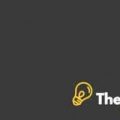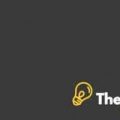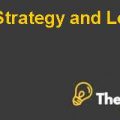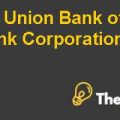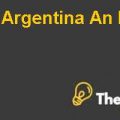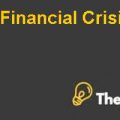
CHABROS INTERNATIONAL GROUP: A WORLD OF WOOD
INTRODUCTION
The Chabros International Group is an international wood company based in Lebanon. In 2007, Antoine Chami invested more than $11 million to acquire sawmill in Serbia in order to meet Chabros increasing lumber demand. Subsequent to the world economic crisis of 2008, the company experienced a reduction in sales volume of its biggest subsidiary. Furthermore, it also experienced a reduction of 30 percent in Dubai’s sales. With this decline in sales, Chami had to decide that how to overcome the problem of utilizing the unused capacity of sawmill. He had two options at his disposal; first was to close parts of his sawmill or second was to try to increase sales in order to use the unutilized capacity. Subsequently for increasing sales he had two options; first was to increase sales in the region in which Chabros already had operations or second was to expand in a new region or country. The feasibility of expansion in Morocco is critically analyzed in the case.
1. What are the major issues and management problems challenging Chabros International Group? Choose two (2) of the following: Strategy/mode of entry; organizational structure; marketing strategy; sourcing strategies/logistics; international and local staffing policy.
The major issues and management problems challenging Chabros International Group are;
- Strategy
- Sourcing strategies
Both of the issues challenging Chabros International Group are discussed below;
- a. Strategy
Subsequent to the 2008 economic crisis, the company experienced a reduction in sales volume. To overcome the declining position of the company; the management had to decide whether to curtail its operation or to expand it. In order to grow, the company faced a dilemma regarding whether to expand in new foreign markets or to penetrate in the existing markets. Both of the strategies had its advantages and disadvantages. The management should adopt a strategy which was profitable for the long term and which instilled growth in the company. To expand in the foreign markets, they must have undertaken extensive marketing activities in order to create brand activation in that particular market.
- b. Sourcing strategies
Being the wood manufacturer and wood wholesaler created a disadvantage for Chabros sometimes. The company was at disadvantage because of being a lumber manufacturer when compared to the lumber wholesalers. In 2008, when Euro increased in value the Russian suppliers of Chabros were able to sell Chabros’ Dubai subsidiary the same lumber that Serbian sawmill produced at a comparatively lower rate. This situation arose because Serbian sawmill’s costing was done in Euros while the Russian suppliers costing was done in Dollars. So Chabros had to cut its production from its own sawmill and sell the production of suppliers.
2. What motivated Chami to expand Chabros’ operations internationally? What strategy did he follow: International, multinational, global or transnational?
The motivational factors driving the expansion in the international markets include;
- Chabros expansion in Serbia was motivated by the purpose of vertical integration with the suppliers. To meet its increasing sales demand in 2007, Chabros wanted to acquire all its lumber suppliers.
- Chabros expansion in MENA was motivated by the purpose of increasing its target market. As Lebanon market was small, the company targeted these new markets and the moves were successful. They are now contemplating to expand into more markets in the same region.
- The acquiring of sawmill at Serbia was also motivated by the purpose of using low-cost labor, which was available in Serbia.
- The other factor that motivated expansion in Serbia and MENA was to benefit from the production economies of scale. Chabros benefitted from production economies of scale by having a combination of abundant wood supply in MENA, low-cost factors of production, cheap energy, efficient transportation system and innovative production technologies at Serbia and rich target market at Dubai.
- Initially the motivation for seeking cheap factors of production and markets with increasing wood demand were the driving factors of expansion. But as they expanded, they found out that different markets had different type and level of wood demand thus, they could tap on this opportunity and make more profits by expanding.
- Expansion was also motivated with the purpose of achieving competitive position all over the world.
Chami followed “multinational strategy” for expansion as he had headquarters in Lebanon, sales subsidiaries in UAE, KSA, Qatar, Oman and Egypt as well as import and manufacturing sites in Serbia. And now Chami is attempting to expand in Morocco too........................
This is just a sample partial case solution. Please place the order on the website to order your own originally done case solution.
International Group Chabros generally considered more a Lebanese multinational timber facing a sharp drop in sales of the largest subsidiary of the global economic crisis in 2008. Antoine Chami, owner and president Chabros reviewing his company in 2009 year-end financial statements and, in particular, a 30-percent drop in sales in Dubai. In 2007, a year before the global economic crisis, Chami has invested more than $ 11 million for the acquisition and expansion of the sawmill in Serbia to meet the growing demand for timber Chabros sales. With a much higher capacity for the production of lumber and much less likely to sell it, Chami had to decide what to do to overcome this problem. Does it need to close some of its sawmills Serbian? If he tries to increase sales of the company in order to use all the features of its saw-author? If yes, Chabros try to increase sales in countries where it is already running (UAE, Saudi Arabia, Qatar, Oman, Egypt) or should it expand into new countries (Algeria, Bahrain, Iran, Iraq, Jordan, Kuwait, Libya, Syria, Tunisia)? Will Morocco and other countries, to be the best country to go to? Was this the right time to embark on such an extension? "Hide
by Paul Beamish, Bassam Farah Source: Richard Ivey School of Business Foundation 16 pages. Publication Date: November 29, 2010. Prod. #: W10001-PDF-ENG



